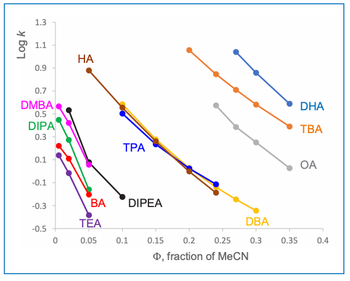
New Study Investigates Optimizing Extra-Column Band Broadening in Micro-flow Capillary LC
Shimadzu Corporation and Vrije Universiteit Brussel researchers recently investigated how extra-column band broadening (ECBB) can be optimized in micro-flow capillary liquid chromatography.
Scientists from Shimadzu Corporation in Kyoto, Japan and Vrije Universiteit Brussel in Brussels, Belgium recently investigated how extra-column band broadening (ECBB) can be optimized in micro-flow capillary liquid chromatography. Their findings were published in the Journal of Chromatography A (1).
High-performance liquid chromatography (HPLC) has significantly improved over the past 2–3 decades, with the scientists crediting this to progress in column technology. For example, decreasing particle sizes down to sub-2 µm (which is linked to ultra-high performance liquid chromatography [UHPLC]), applying superficially porous particles (core-shell [CS] particles), or reducing the domain size of monolithic skeleton structure, can improve size distribution of particles or skeletons, leading to enhancements for structural packing homogeneity.
While LC columns play key roles in achieving high chromatographic power, it is important to design and construct desirable LC instrument set-ups to fully bring out a column’s inherent resolution power. This stems from unavoidable extra-column band broadening (ECBB) in various parts of an instrument, such as the flow-channel tubing, the connections between the tubing and the column inlet/outlet, or the injector (internal volume, diameter of internal bores, injection volume). Microflow LC, unlike conventional LC, downsizes two key variables: the inner diameter (ID) of the fluidic channel inside the separation device and the volumes of fluids flowing through columns in a given time (2).
In this study, the scientists systematically assessed the ECBB contribution of different LC instrument parts under fixed isocratic measurement conditions, using coumarin compounds with a retention factor (k) of respectively ∼1.2 and ∼2.6 at a flow rate (F) of 2.0 μL/min and a commercial LC column with an inner diameter (i.d.) of 0.2 mm. To avoid measurements themselves affecting ECBB, detection was conducted with an on-capillary LED induced fluorescence detector. Using this approach, the ECCB effect of (1) the flow-channel tubing i.d., (2) the tubing union, (3) the connection fitting, and (4) the injection valve was quantified in terms of its volumetric peak variance.
With a standard micro-LC set-up with a 10 nL-injector and 50 μm i.d. tubing with commercial fittings, ECBB reductions on the order of Δσv2 = 200–300 nL2 (F = 2.0 μL/min) can be achieved per optimized instrument part when applying the possible best set-up for each part. This was deemed notable, as according to the scientists, a well-packed micro-LC column can produce an inherent peak variance in the order σv2 = 2500–3000 nL2 for an analyte with k = 2.
Additionally, the scientists investigated the ECBB effects of the post-column part under gradient LC for peptide separations. When changing i.d. post-column tubing of a short (approximately 100 mm) piece from 50 to 25 µm, there is a large difference in peak variance. This pattern is in full agreement with much slower molecular diffusivity of peptides, suggesting that gradient LC peptide analyses are very vulnerable to post-column ECBB effects, likely due to combining strong on-column peak compression and slow diffusion.
Solid theoretical interpretations of experimental data will be vital to designing and constructing legitimate micro-LC instrument systems. As well-packed and designed micro-LC columns arise in the future, the availability of credible instruments will continue to be important.
References
(1) Hara, T.; Nakahara, K.; Broeckhoven, K.; Desmet, G. Investigation and Optimization of the Extra-Column Band Broadening in Micro-Flow Capillary Liquid Chromatography. J. Chromatogr. A 2025, 1748, 465805. DOI:
(2) Waters Staff. What is Microflow LC? Waters Blog 2016.
Newsletter
Join the global community of analytical scientists who trust LCGC for insights on the latest techniques, trends, and expert solutions in chromatography.




